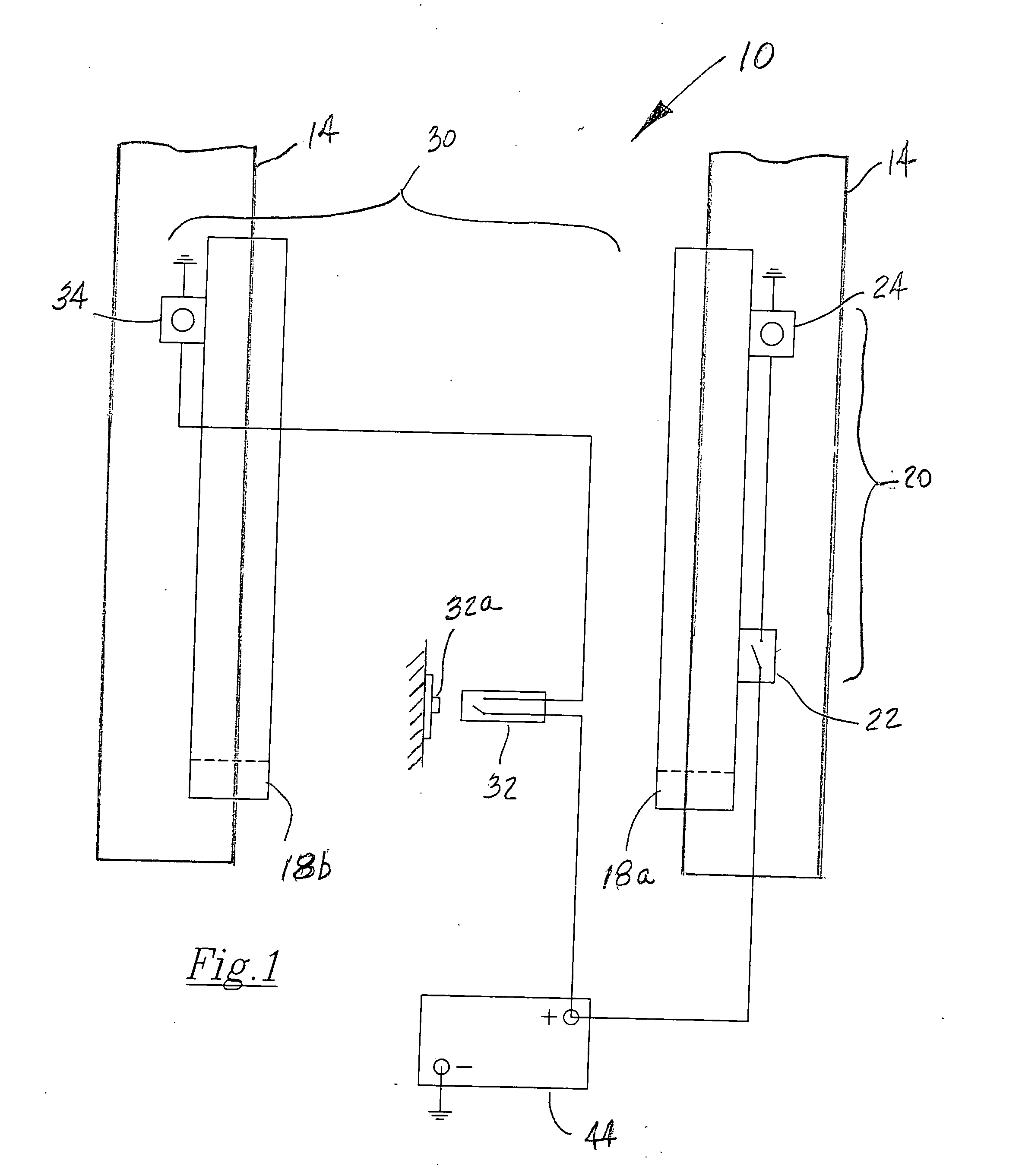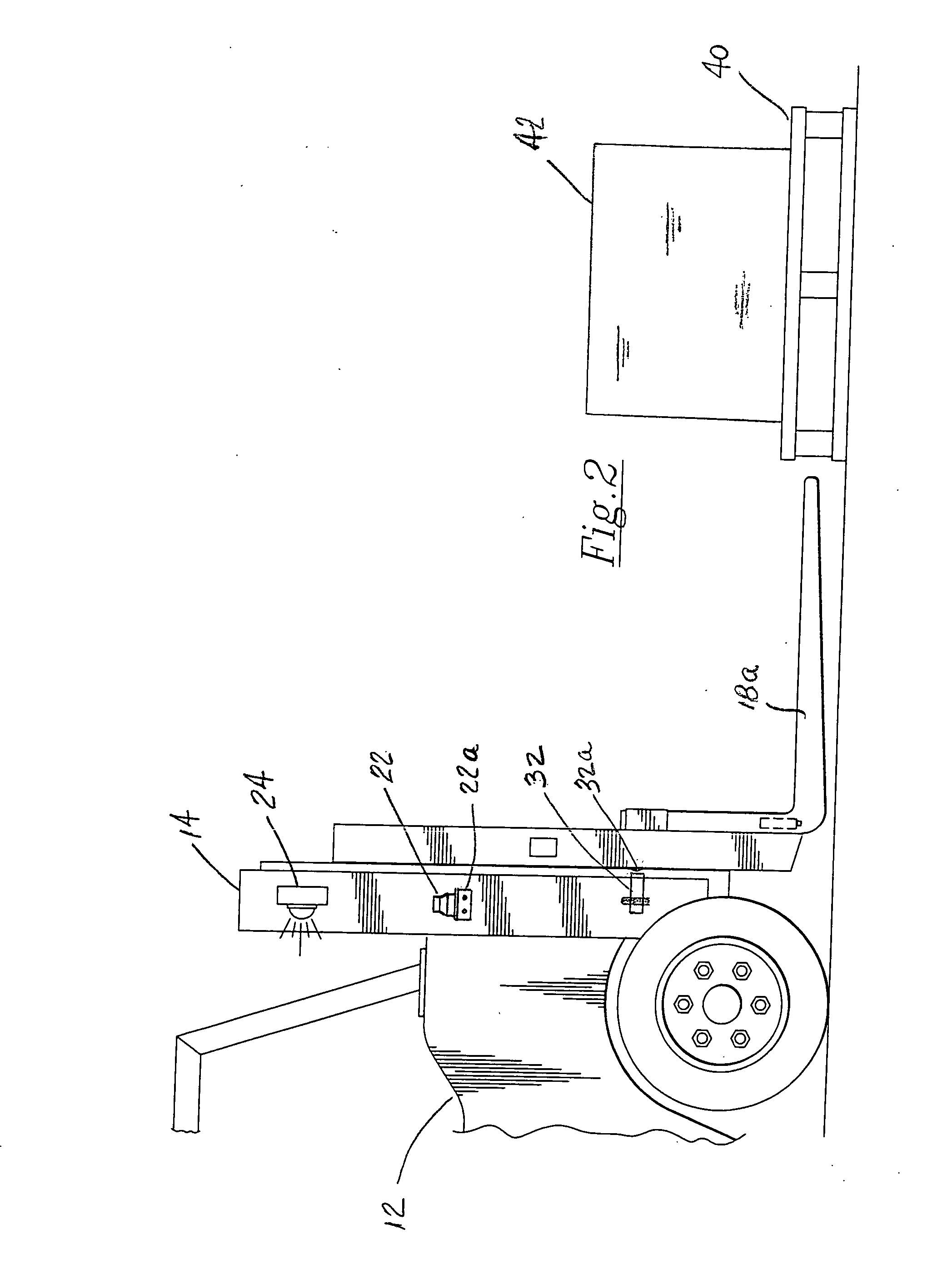Lift truck fork aligning system with operator indicators
a technology for operator indicators and lift trucks, which is applied in the direction of lifts, lifting devices, transportation and packaging, etc., can solve the problems of improper engagement, damage to pallets, or tipping of material, and misjudge the elevation of forks, so as to achieve safe inserting of forks
- Summary
- Abstract
- Description
- Claims
- Application Information
AI Technical Summary
Benefits of technology
Problems solved by technology
Method used
Image
Examples
Embodiment Construction
[0021]The following detailed description is of the best presently contemplated mode of carrying out the invention. The description is not intended in a limiting sense, and is made solely for the purpose of illustrating the general principles of the invention. The various features and advantages of the present invention may be more readily understood with reference to the following detailed description taken in conjunction with the accompanying drawings.
[0022]Referring now to the drawings in detail, where like numerals refer to like parts or elements, there is shown in FIG. 1 a lift truck fork aligning and positioning system 10. The system 10 consists of dual fork alignment and positioning sensors that provide a verticality determination for the forklift mast and a predetermined height determination for the forks, and include indicator lamps for visual operability checks for the operator. Thus, the aligning and positioning system 10 comprises a first sensing means 20 that includes a ...
PUM
 Login to View More
Login to View More Abstract
Description
Claims
Application Information
 Login to View More
Login to View More - R&D
- Intellectual Property
- Life Sciences
- Materials
- Tech Scout
- Unparalleled Data Quality
- Higher Quality Content
- 60% Fewer Hallucinations
Browse by: Latest US Patents, China's latest patents, Technical Efficacy Thesaurus, Application Domain, Technology Topic, Popular Technical Reports.
© 2025 PatSnap. All rights reserved.Legal|Privacy policy|Modern Slavery Act Transparency Statement|Sitemap|About US| Contact US: help@patsnap.com



